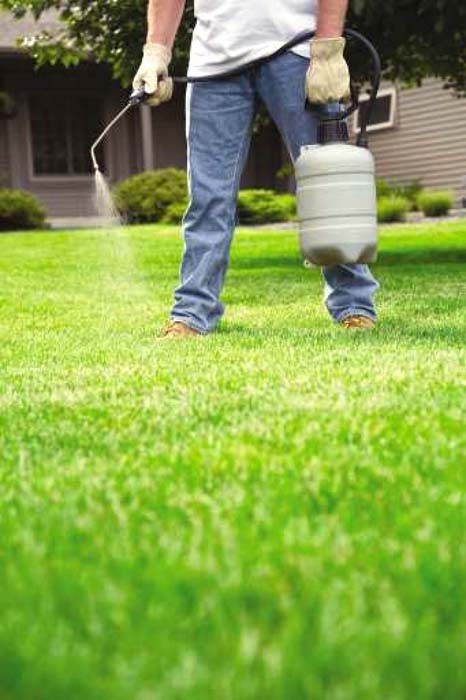Late summer weeds
Published 4:22 pm Wednesday, October 8, 2014

- Spraying for weeds
In agriculture, the more you learn, the less you know. Many farmers will tell you this. No season is the same, and you learn something every day. We began this year with enough rain to slow down planting. Once we got everything planted, the rain shut off. With so much dryland acreage in the county, many of our crops were stressed during critical periods of growth. This has caused many issues in our lawns and gardens as well.
You may remember a previous article where I discussed turf response to drought. Since then, rain has come back and provided much needed water for our plants around the house. The timing of these rains, however, has brought about other issues. With temperatures decreasing and rain more abundant, turf diseases are showing up. Our key pest found in lawns and gardens since mid-summer, however, is late-emerging weeds.
Trending
A few weeds I have answered questions about are common lespedeza, chamberbitter, crabgrass, and spurge. One characteristic about these weeds is they are annual weeds that germinate when temperatures are higher. Annual means they sprout, mature and produce seed in one year. Lespedeza, chamberbitter and spurge are broadleaf weeds whereas crabgrass is a grass weed. Their biology is important to understand when it comes to controlling these weeds.
The most common weed I see now is common lespedeza. This weed forms a prostrate, wiry growth habit with three oblong leaves. It has a prominent midvein with small veins growing parallel. Many times you can see a single pink to purple flower. It grows down in the grass and from a distance appears as a different shade of green within the grass. Spurge can have similar growth habits. There are many different species of spurge.
We see chamberbitter in the lawn and flower beds. It is characterized by leaves arranged in two rows on the branchlets. In flower beds, it usually grows tall and upright. In the lawn, it grows down in the turf. Lespedeza, chamberbitter and spurge are all broadleaf weeds that can be selectively controlled with herbicides. A herbicide is said to be selective if it can selectively kill one plant while leaving another plant less or uninjured.
Selectivity is easier accomplished when controlling broadleaf weeds in grasses or vice versa. This is because of the biological difference in grasses and broadleafs. Selectivity is much more difficult when controlling grass weeds in grasses, such as crabgrass control in a Centipede or St. Augustine lawn. There are more herbicide chemistries available for post-emergent crabgrass control for commercial applicators than for residents.
For crabgrass control in residential situations, I would consider applying pre-emergent herbicides. Herbicides are not only characterized as having selective versus non-selective control but also having pre-emergent and post-emergent control. Pre-emergent control means controlling weeds before they emerge. These herbicides have soil activity and kill the weeds as they germinate. Post-emergence refers to killing weeds that you already see, or that have emerged.
We commonly use products like Atrazine and Southern Trimec as both pre and post-emergent control. These herbicides are good on broadleaf weeds in grasses. The timing of these products for pre-emergent use is late February for summer weeds and early October for winter weeds. I have not been recommending residents treat these weeds last month since we were approaching our winter pre-emergence timing.
Trending
Although early spring and fall are normal pre-emergent application timings, it may be beneficial to apply pre-emergent herbicides in April or May for weeds that germinate later in the summer. Always read the label before applying pesticides. The label gives us information on how to apply the herbicide, what rate to use, and where it is safe to treat. Some pesticides do not work well on certain weeds. If you lawn has crabgrass issues, different pre-emergent herbicides work better for control.
You might say, “Andrew, just tell me what to spray!” Unfortunately, each lawn and landscape scenario is different, and there are many things to consider. If you know or suspect any of these weeds currently invading your lawn and need help deciding best control options, call me at the Thomas County Extension office (225-4130).
Information for this article was taken from “Weeds of Southern Turfgrasses.”






